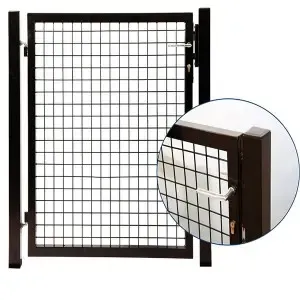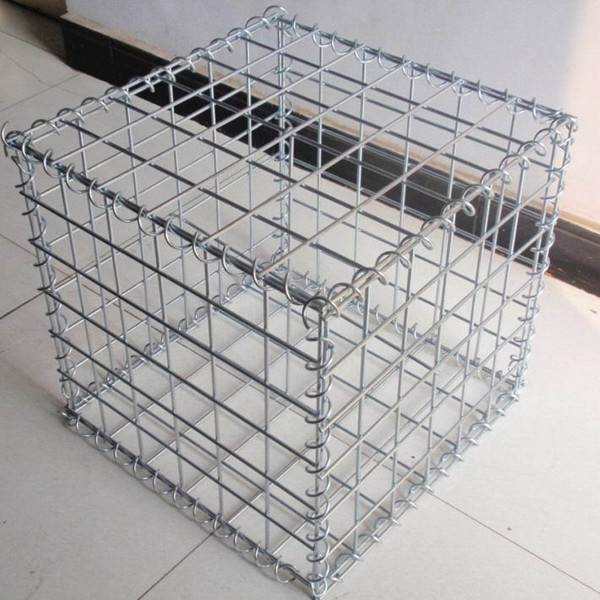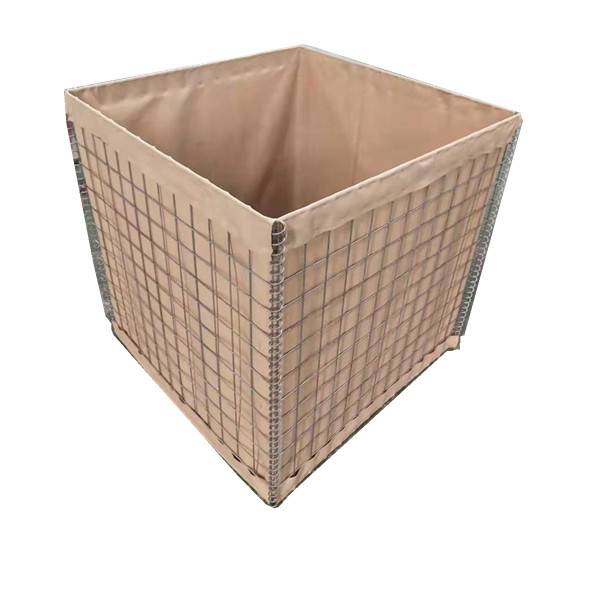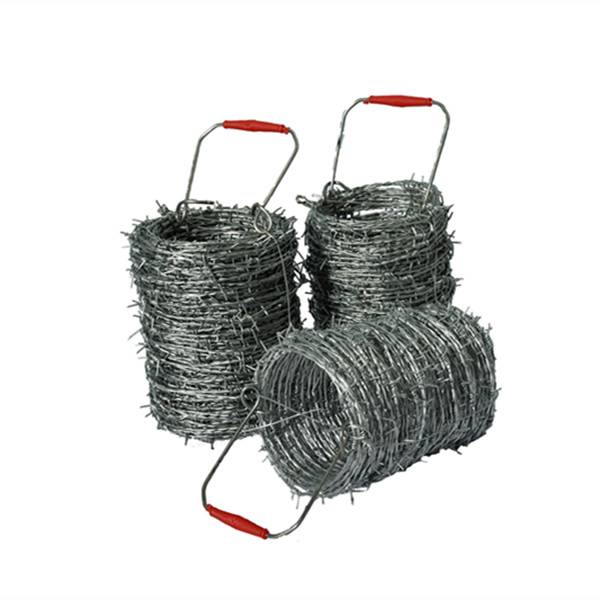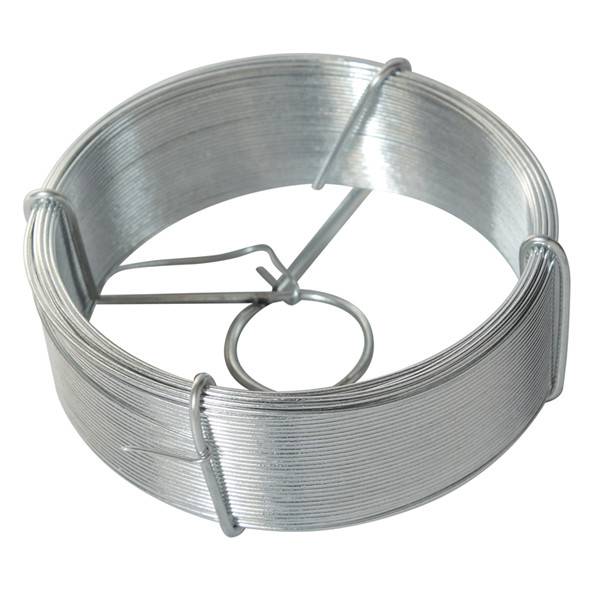
Nov . 15, 2025 21:30 Back to list
Heavy Gauge Wire Mesh – Durable Solutions for Industrial & Humanitarian Use
Heavy Gauge Wire Mesh: More Than Just a Grid of Steel
At first glance, heavy gauge wire mesh might seem like a straightforward product—a simple grid made of thick steel wires, right? But peel back the layers a bit, and you realize it's a surprisingly critical element weaving together diverse industries, global infrastructure projects, and even humanitarian efforts worldwide. Understanding heavy gauge wire mesh matters because it’s not just about fencing or filtration; it’s a silent cornerstone ensuring safety, durability, and innovation across construction, agriculture, mining, and beyond.
Simply put, heavy gauge wire mesh offers strength and resilience where you need it most, making it an indispensable component in environments where reliability isn’t optional.
Why Heavy Gauge Wire Mesh Holds Global Importance
Globally, the demand for robust materials that withstand environmental, mechanical, and even social challenges is soaring. According to the International Organization for Standardization (ISO), industrial safety standards are pushing for more durable, high-strength materials. That’s boosted demand for wire mesh products with thicker gauges—especially in infrastructure development across the Asia-Pacific and Middle East regions.
In real terms, the World Bank cites that billions of dollars flow into post-disaster reconstruction projects annually. These projects increasingly rely on materials like heavy gauge wire mesh to rebuild quickly and safely. Think of areas ravaged by earthquakes or floods, where early structural support often depends on fast-to-install, tough wire mesh that acts as reinforcement. Without these, delays and safety issues multiply.
So the challenge is evident: how to provide materials that are both strong and adaptable enough to meet these diverse and urgent needs. Heavy gauge wire mesh happens to tick those boxes pretty well.
What Exactly is Heavy Gauge Wire Mesh?
In the simplest terms, heavy gauge wire mesh consists of interwoven or welded steel wires with a thickness (gauge) typically ranging from around 8 gauge (about 4 mm) to even thicker, depending on use. “Gauge” here refers to wire diameter—the smaller the gauge number, the thicker the wire. This thicker wire differs from lighter mesh variants used for insect screens or decorative purposes.
It’s important to remember that heavy gauge wire mesh is manufactured using carbon steel, stainless steel, or galvanized steel, which gives it corrosion resistance and strength. This durability ensures it stays reliable when used in industries ranging from construction scaffolding and concrete reinforcement to security fencing or filtration in chemical plants.
Interestingly, such a product bridges both industrial needs and humanitarian applications. When emergency shelters or temporary infrastructure are constructed, this mesh provides a trusted framework that balances rapid deployment with long-term reliability.
Core Features That Shape Its Role
Durability That Withstands the Test of Time
When you’re dealing with environments exposed to harsh weather or mechanical wear, the mesh’s thick steel wires don’t just bend; they fight back. Especially galvanization—the zinc coating—adds layers of rust resistance that prolong service life well beyond initial expectations.
Scalability and Versatility
Heavy gauge wire mesh comes in various panel sizes and thicknesses, allowing engineers to customize solutions. Whether covering vast agricultural land to protect livestock or providing security barriers around sensitive zones, the mesh adapts surprisingly well.
Cost-Efficiency Through Strength
Stronger wire means fewer materials used overall—sometimes, a single heavy gauge panel replaces multiple layers of lighter mesh, saving money and installation time. Plus, lower maintenance costs make it attractive in a long-term budget.
Safety and Security
Because of its strength and rigidity, heavy gauge wire mesh enhances safety in construction zones, mines, or volatile environments. Its resistance to breakage acts as a deterrent against trespassers or accidental intrusions.
Heavy Gauge Wire Mesh in Action: Global Uses and Examples
Snaking through industries worldwide, heavy gauge wire mesh turns up in places you might not expect.
- Construction: Reinforcing concrete slabs or retaining walls in Europe and North America.
- Mining: Used to stabilize mine shafts and filter debris in South African gold mines.
- Agriculture: Enclosing large livestock areas in Australia to protect against predators.
- Humanitarian: Emergency shelters and field hospitals in disaster-prone regions of Southeast Asia.
One project I came across involved NGOs building resilient child protection zones after a typhoon in the Philippines—heavy gauge mesh fencing was crucial. Because it’s easy to handle and install yet super-strong, teams set up secure perimeters quickly, ensuring safety and dignity for vulnerable communities. It’s a neat reminder of the social impact such a technical product can have.
Summary takeaway:
Heavy gauge wire mesh isn’t just a construction material; it’s a global safety net, securing livelihoods, infrastructure, and even lives.
Technical Specifications of a Typical Heavy Gauge Wire Mesh Panel
| Specification | Description |
|---|---|
| Wire Gauge | 8 gauge (4.17 mm) to 4 gauge (5.19 mm) |
| Material | Galvanized Steel or Stainless Steel (304/316) |
| Mesh Opening Size | Between 25 mm to 100 mm (1” to 4”) square or rectangular |
| Panel Size | Typically 2m x 3m (custom sizes available) |
| Finish | Hot-dip galvanization for corrosion resistance |
| Weight | Approx. 10-20 kg per panel (varies by gauge & size) |
Vendor Comparison: Choosing the Right Heavy Gauge Wire Mesh Supplier
| Supplier | Material Grade Options | Custom Sizes | Lead Time | Price Range (per panel) |
|---|---|---|---|---|
| SteelPro Mesh Ltd. | Galvanized & Stainless 304 | Yes | 2–4 weeks | $80–$120 |
| GlobalWire Solutions | Galvanized Steel Only | Limited | 1–3 weeks | $65–$95 |
| InduMesh Corp. | Stainless 304, 316 | Yes (bulk orders) | 3–6 weeks | $100–$150 |
Why Invest in Heavy Gauge Wire Mesh? Advantages and Lasting Value
Putting it bluntly, heavy gauge wire mesh is a long game. It might cost a tad more upfront than lighter options, but it pays off in durability and reduced maintenance. Its toughness guards against environmental wear and mishandling, which—trust me—happens a lot in real-world settings.
From an emotional viewpoint, consider how such a sturdy material instills a sense of safety in workers on site or residents near secure fencing. That peace of mind matters a lot when you’re talking about protecting families or critical equipment.
Logically, you get better lifecycle value plus compliance with rising industrial standards. That means fewer replacements, less downtime, and ultimately, smoother project execution.
Peeking Ahead: Future Trends & Innovations in Heavy Gauge Wire Mesh
What’s next for this unassuming steel stalwart? For one, sustainability is reshaping its production and application. More vendors are switching to recycled steel sources and greener galvanization methods to reduce environmental impact. Meanwhile, the integration of digital tech—like RFID tagging on mesh panels—enables real-time inventory and condition tracking on large construction sites.
Also, hybrid composite mesh products incorporating polymers for lighter weight but similar strength are making waves in aerospace and automotive sectors. This kind of cross-industry innovation points toward a future where heavy gauge wire mesh isn’t just heavy—it’s smarter.
Current Challenges and How the Industry is Tackling Them
Of course, no product is flawless. Heavy gauge wire mesh can sometimes pose logistical challenges due to its weight and bulk, especially for remote job sites. Furthermore, improper installation risks corrosion if protective coatings are scratched or compromised.
Experts recommend thorough training, site-specific customization, and partnerships with suppliers who offer on-demand fabrication and quality certifications. These approaches go a long way toward mitigating common pitfalls.
FAQ: Quick Answers About Heavy Gauge Wire Mesh
Q1: How do I choose the right wire gauge for my project?
A: It depends on your strength requirements and environmental conditions. For heavy-duty applications like security fencing or concrete reinforcement, thicker gauges (6-8) are preferred. For lighter needs, a higher gauge can suffice. Always consult specs matching your industrial standards.
Q2: Can heavy gauge wire mesh be used outdoors in coastal areas?
A: Yes, but stainless steel or properly galvanized mesh is essential to resist corrosion from salty air. Regular inspections and maintenance help extend lifespan in such harsh environments.
Q3: Is customization widely available for heavy gauge wire mesh panels?
A: Many vendors now offer tailored sizes and mesh openings to fit specific project needs. Bulk orders typically unlock more customization options and better pricing.
Q4: How is heavy gauge wire mesh installed in disaster relief contexts?
A: Installation is generally quick—panels can be secured with bolts or clamps to existing structures or temporary supports, enabling fast perimeter setups without specialized machinery.
Wrapping Up: A Strong Foundation for Tomorrow
Heavy gauge wire mesh may not be flashy, but it’s a real workhorse—delivering safety, reliability, and flexibility where it counts most. From industrial giants to emergency shelters, its global importance only grows as the world demands tougher, smarter infrastructure.
If you want to explore quality heavy gauge wire mesh options tailored to your unique needs, do drop by our website. Because sometimes, investing in the right mesh means building the future on a sturdier grid.
References & Further Reading
-
Custom Weld Mesh – Tailored Solutions for Durable Industrial Fencing & Construction
NewsNov.24,2025
-
Comprehensive Guide to Chicken Welded Wire Mesh: Uses, Benefits & Suppliers
NewsNov.23,2025
-
BRC Weld Mesh – Durable Reinforcement Solutions for Modern Construction
NewsNov.23,2025
-
Durable BRC 3315 Mesh for Reliable Concrete Reinforcement | Hardware In Store
NewsNov.23,2025
-
Discover the Benefits of Green Weld Mesh – Durable, Sustainable Fencing Solutions
NewsNov.22,2025
-
Electro Welded Mesh: Durable, Versatile Steel Grid Solutions | HardwareInStore
NewsNov.22,2025
Products categories





